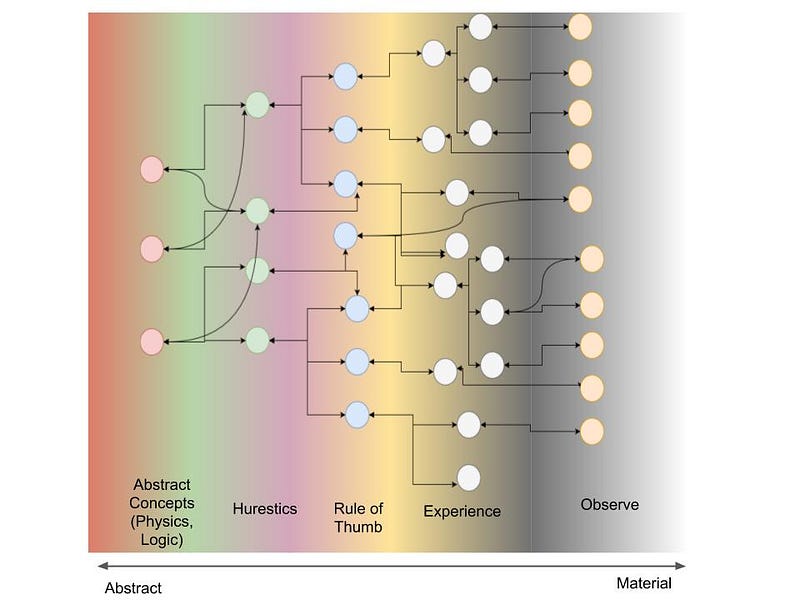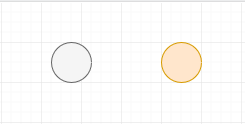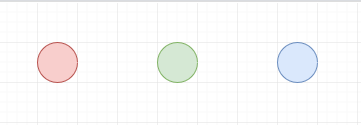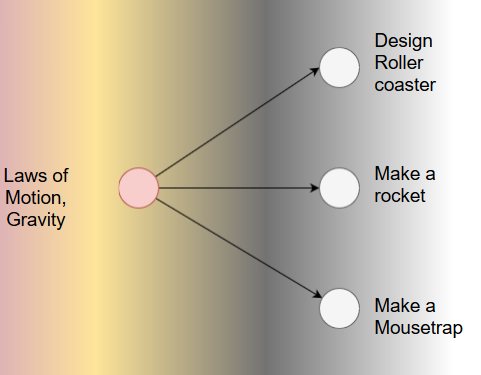I am doing something stupid here. I am talking about a subject I know nothing about. The topic of discussion: Learning and how we do it.
Out of 24 years of my existence, I have spent 14 years in School and 4 years in college. The main reason you go to schools and colleges is to learn. Given that I have spent 18 years of my life learning, I should be good at it, right? *some misunderstood ten thousand hour rule reference here*
Here’s the thing, I don’t understand learning. Forget about a objective understanding of the subject with equations and formulae, I don’t even have an intuitive understanding. When I decide to learn something, I don’t know what is the best way to go about it. Should I read a book, should I do some tutorial or a online video course?
Realizing this lack of understanding about ,well understanding, I tried to guess a mental model on how learning might work. This model is explained below.
Learning can be broadly divided into experiential and academic learning.
1] Experiential learning
Things you learn when you interact and observe the world at the most granular level come under experiential learning. Learning wood carving by trying to carve Gal Godot’s face on a piece of oakwood(but somehow ending up with Boris Johnson) is experiential learning but watching a YouTube tutorial is not.
Things you learn about quantum bullshitting while attending a lecture on “quantum bullshitting for MBAs” (1 of 10 part series) by Professor McProfessorface isn’t experiential learning but doodling Gal Gadot’s face during that lecture is.
Basically, things you learn when you are trying to do rather than learn is experiential learning.
2] Academic learning
Every other way that is not Experiential learning is academic learning. This include:
- Reading a textbook.
- Watching a YouTube tutorial.
- Friend helping you solve a problem.
- Your father instructing you on how to insulate the coils of an electric motor.
- Watching your mom make a Dosa.
Of course most of the “skills” and “trades” are learned by experiential learning while more abstract topics like math and logic are academically focused. Though finding exceptions in both directions won’t be hard.
How we learn – a wild guess
It’s worth reiterating my lack of academic as well as experiential knowledge about the subject here. having said that the diagram below describes my framework for learning; or as I like to call it “Mental model of mental models”.

Lets look at the model one layer at a time.
Let’s say, you divide your life into distinct events ranging in duration from few seconds to hours and even days based on the activity* you are doing; First pale yellow/orange circle(Observation) represents the combination of all sensory input your body produces during an event. This includes all that you see, hear, feel and taste.

*Grey Box - Defining Activity Tying a knot is a distinct activity(few minutes). Trekking a mountain is also a distinct activity which includes tying knots, setting up tents and walking(few days). Weather you consider tying knot as distinct activity or part of trekking depends on the kind of experiences you are trying to draw from the activity.
Next is Experience. Experience is basically observations that you (partly) remember. Either consciously or unconsciously.
I have separated observation and experience simply because not all observations produces an experience that can be translated into learning. Think about it. Everyday when you put on your shoes, do you gain any new experience (assuming you have been wearing shoes from childhood). probably the first few hundred times you put on the shoes you learn something (conscious learning or unconscious shoe lace tying skill improvement). But the marginal learning from tying the shoe lace is zero if you are already an adult.
Of course, one day you might suddenly discover a new way to tie the lace and that would be a new experience, but that would probably happen only a few times in your entire adult life. It is difficult to know which observations will produce an experience but you can be almost sure that most of them won’t.
The first two layers of the diagram can be more accurately represented like this:

Once we are through the second layer, moving left in the diagram is just increasing the abstraction. You can consolidate leanings from a few similar experiences into rules of thumb. After the death of your third nemo; you will probably have developed a vague rule of thumb on frequency of changing water in the fish tank. A few laundry related burns would definitely teach you time it takes for the iron to cool off.A few more burns here and there and you might even have an intuitive understanding of heat transfer.

Let’s consider an entirely hypothetical situation: you try to make your cheese sandwich tangy by squirting lemon all over it and then proceed to eat it because you are too proud (and too hungry) to let you effort go to waste. Here, you can learn never to squirt lemon juice over cheese sandwich or you can also learn a relatively abstract concept that cheese and lemon juice do not go together at all. Of course, you are more likely to reach the latter conclusion if you have tried to squirt lemon juice on a pizza just a few days ago.
You might go even further and conclude that too much cream and too much tang do not go together(I am not saying you would be right, I am just saying that you can reach the conclusion).

Lets now talk about the two types of learning once again now. One of the key properties of Experiential learning strict unidirectional flow of learning. All experiential learnings should start at observation and experience and progressively flow towards abstraction. This means that you have a lot of rules of thumbs, experiences and hurestics(conscious rules put to words as well as intuitive gut feelings) if you prefer experiential learning. On the down side, this restriction of starting point (at observation) and unidirectional flow of abstraction means that you might not learn many abstract concepts.

This is why, experiential learning a great way to learn skills and trades where things differ vastly on case by case basis, eg. woodworking, stock trading. There are very few abstract concepts in these disciplines and most of the problems are solved by referencing back to similar experiences you have had in past.
On the other hand Academic learning can happen at any stage of abstraction(Apart form actual experience). You can directly learn a abstract concept ,say laws of motion and gravity, and use them for a very specific case, say designing worlds biggest roller coaster. You can also learn from experiences and stories of others.(History, case studies, etc.)

This makes academic learning suite well for fundamental and top down subjects like physics and chemistry.
Few important things to note here:
- Going down the abstraction ladder is much easier than going up: Any competent engineer can basic laws of motion, gravity and material properties and design a roller coaster. But it takes a newton to take observations of planetary bodies and an apple falling off a tree and create one single law that governs both.
- What one learn from an observation is not consistent: When a apple fall on your head, you can develop a rule of thumb to not sleep in shadow of apple tree , or you can develop a heuristic that all things with mass fall to earth.
- Some information may be lost as you go up the abstraction ladder: Say you are trying to abstract out the law of gravity from your (very annoying) experience under a certain apple tree. As you formulate those laws, the information about the shape and size of the apple, the aerodynamic force on it and hundred of other details are lost. Of course, this is an extreme case of abstraction and hence the loss of information is also extreme.
I might write a part two trying to use this model/framework to explain certain aspects of learning.